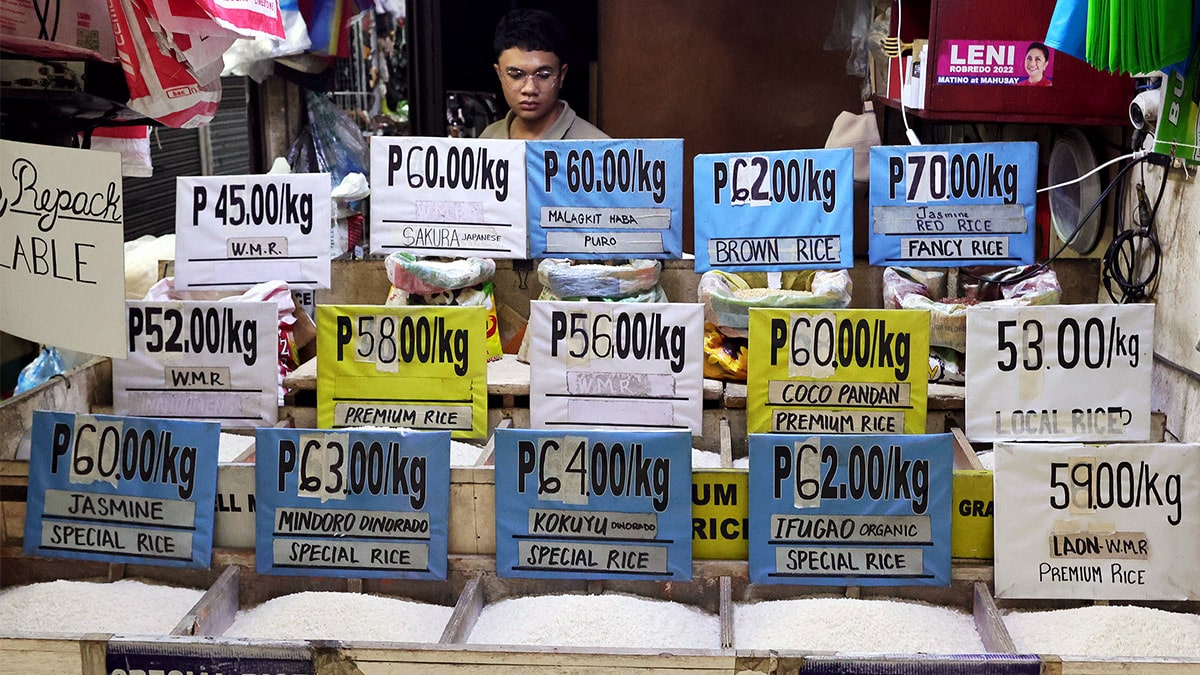PH inflation accelerated to 2.3% in October
As expected, Philippine inflation accelerated in October to 2.3 percent, mainly due to more expensive food and nonalcoholic beverages and a slower drop in rice prices, according to the Philippine Statistics Authority.
Preliminary PSA data showed that inflation as measured by the consumer price index (CPI) picked up pace to 2.3 percent year-on-year in October, up from 1.9 percent in September.
However, this was considerably slower than the 4.9 percent recorded in October last year.
READ: Philippine inflation rises to 2.3% in October
The uptick in October also settled well within the 2-2.8-percent forecast of the Bangko Sentral ng Pilipinas (BSP) for the month, and slightly lower compared to the 2.4 percent average inflation forecast in an Inquirer poll of eight economists conducted last week.
Inflation print in October marked the fastest growth in two months or since the 3.3 percent logged in August. Stripping out seasonality factors, month-on-month inflation increased by 0.1 percent in October.
For the first 10 months, inflation averaged 3.3 percent, still lower than the average of 6.4 percent as of October 2023.
National Statistician Dennis Mapa attributed the rise in inflation to the increasing prices of food, particularly vegetables.
“The expectation is that this month of November, maybe [in the ] first two weeks, we will also see an increase in the price of vegetables. So we are tracking that,” he said.
The heavily weighted food and nonalcoholic beverages index accelerated to 2.9 percent from 1.4 percent in the previous month, but slower compared to the 7 percent seen a year ago.
Food inflation rose to 2 percent in October, up from 1.4 percent the previous month, but still significantly lower than the 7.1 percent recorded last year.
Rice prices
Meanwhile, rice inflation, a major food staple for Filipinos, jumped to 9.6 percent in October, up from 5.7 percent the previous month, contributing 0.7 percentage points to the overall CPI.
The increase was also partly driven by a slower annual decline in transport costs, which fell by 2.1 percent, compared to a 2.4 percent drop in September.
Emilio Neri Jr., lead economist at Bank of the Philippine Islands, said that the price increases in rice continue to be a major factor even though its price has dropped slightly on a month-on-month basis.
“Base effects resulted in a faster year-on-year increase in rice prices, leading to a higher inflation print. Other food prices have been more contained, with vegetables still showing declines year-on-year, although smaller compared to the previous month,” Neri said in a report.
The country’s agriculture sector suffered damages amounting to P6.20 billion due to Severe Tropical Storm “Kristine” last month, with the rice subsector accounting for the majority of the loss at P4.2 billion.
Neri expects prices to rise in the future due to recent weather disruptions, which could reduce the supply of food, particularly vegetables.
In June, the National Economic and Development Authority Board agreed to reduce the rice tariff from 35 percent to 15 percent in an effort to lower rice prices.
For Leonardo Lanzona, economist at Ateneo de Manila University, inflation is rising again because the government hasn’t implemented significant policy changes, aside from lowering tariffs, which has made the country more vulnerable to fluctuations in global markets.
“Unless we address the supply side constraints within our own economy, we will be subject to increasing inflationary pressures from external factors, especially from the continuing geopolitical tensions,” he told Inquirer.

